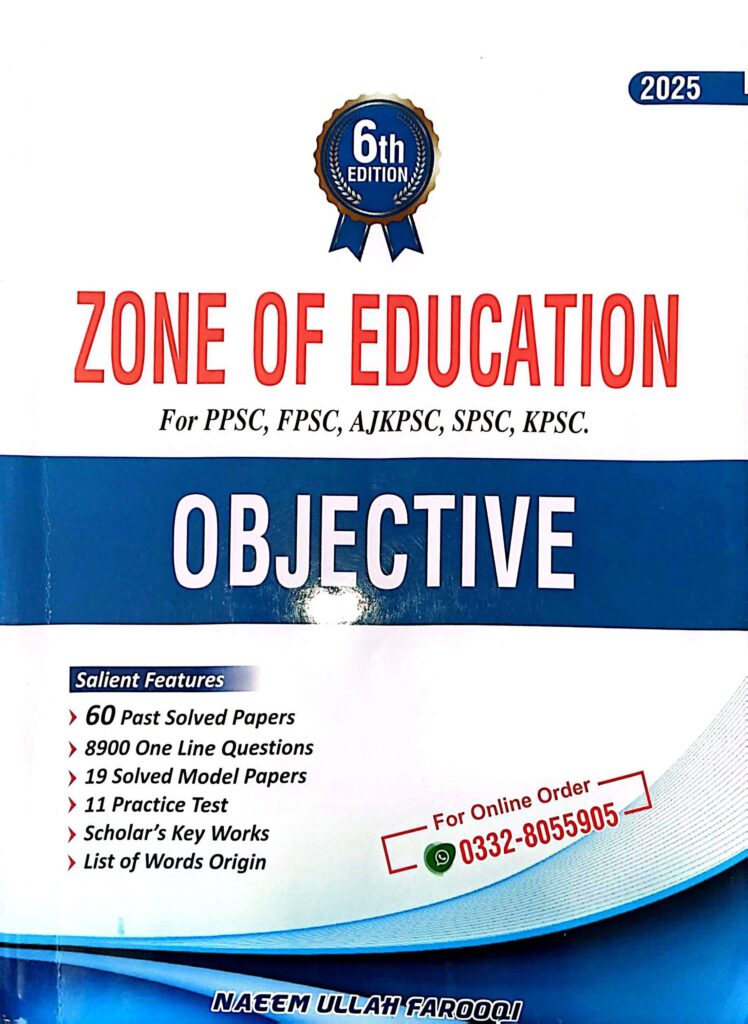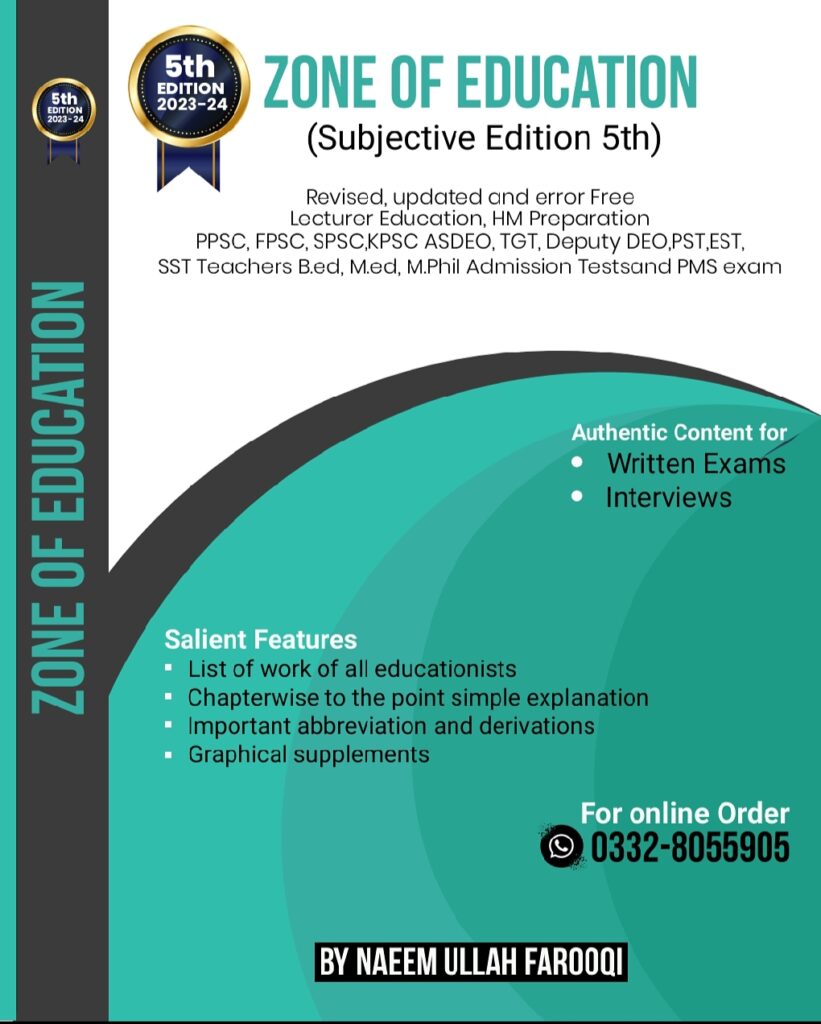Psychology
.1. According to Freud, children pass through all the following psychosexual stages of development except:
o A. Genital
o B. Phallic
o C. Oral
o D. Autoerotic
o Ans: (D) Autoerotic
2. Socially undesirable behaviors are learned as a result of:
o A. Social influences
o B. Heredity
o C. Environmental influences
o D. None of the above
o Ans: (C) Environmental influences
3. Which is a more comprehensive definition of the exceptional child?
o A. He is intellectually very superior
o B. He is emotionally undeveloped
o C. He is socially much different from others
o D. He departs from the normal child in Mental, physical, and social characteristics
o Ans: (D) He departs from the normal child in Mental, physical, and social characteristics
4. Which is not included in the special provisions for dealing with gifted children?
o A. Acceleration
o B. Adaptation or enrichment
o C. Ability grouping
o D. Schemes of special scholarships and awards
o Ans: (D) Schemes of special scholarships and awards
5. The theory of self-rewarding learning was presented by:
o A. Skinner
o B. Bruner
o C. Pavlov
o D. Thorndike
o Ans: (B) Bruner
6. Creativity increases with:
o A. Age
o B. Education
o C. Practice
o D. Experience
o Ans: (D) Experience
7. Creativity among poor children is always:
o A. Improved
o B. Cultivated
o C. Dead
o D. Unaffected
o Ans: (B) Cultivated
8. The term “problem children” is generally used to describe children who:
o A. Have a low general intelligence
o B. Are specifically backward in one subject
o C. Have a physical defect
o D. Are maladjusted in the society
o Ans: (D) Are maladjusted in the society
9. Temper tantrums occur among children due to:
o A. Over protection
o B. Low intelligence
o C. Poor imagination
o D. Inherited emotional instability
o Ans: (D) Inherited emotional instability
10. The development of all emotions by the age of two years was promoted by:
o A. Bridges
o B. Watson
o C. Thompson
o D. Thorndike
o Ans: (A) Bridges
11. Operant conditioning can also be referred to as:
o A. Instrumental conditioning
o B. Classical conditioning
o C. Operative conditioning
o D. Condition after thought
o Ans: (A) Instrumental conditioning
12. Thorndike is remembered for his contribution to the theory of:
o A. Trial and error
o B. Methods of learning
o C. Insight theory
o D. Conditioning
o Ans: (A) Trial and error
13. In an intelligence test, a 10-year-old child was found to have a mental age of 12 years. His IQ is:
o A. 100
o B. 120
o C. 105
o D. 95
o Ans: (b) 120
14. Mentally retarded persons have IQs below:
o A. 90
o B. 70
o C. 100
o D. 120
o Ans: (B) 70
1. Intelligence is the ability to adjust oneself to a new situation.” This definition was given by:
o A. Wells
o B. Terman
o C. Merrill
o D. William Stern
o Ans: (D) William Stern
2. The definition of intelligence as: “Intelligence is the property of recombining our behaviour pattern so as to act better in a novel situation.” Was given by:
o A. Wells
o B. William Stern
o C. Hull
o D. Binet
o Ans: (A) Wells
3. The formula for calculating IQ is:
o A. MA/CA × 100
o B. MA/CA × 200
o C. CA/MA × 100
o D. CA/MA × 200
o Ans: (A) MA/CA × 100
4. The emotional immaturity in a child may result in:
o A. Struggle
o B. Pain
o C. Frustration
o D. Anger
o Ans: (C) Frustration
The Biological Bases of Behaviour
5. The system made up of neurons and glial cells is:
o A. Muscular system
o B. Nervous system
o C. Skeletal system
o D. All of the above
o Ans: (B) Nervous system
6. …………….. provide support for neurons and contribute to communication:
o A. White cells
o B. Red cells
o C. Glial cells
o D. None of the above
o Ans: (C) Glial cells
7. Neurons normally transmit _______ to a synapse with another neuron along an axon:
o A. A neural impulse
o B. A sensical impulse
o C. An instinctual impulse
o D. None of the above
o Ans: (A) A neural impulse
8. Most ………… are linked in neural pathways, circuits, and networks:
o A. Cells
o B. Neurons
o C. Potentials
o D. All of the above
o Ans: (B) Neurons
9. The nervous system can be divided into the central nervous system and:
o A. The muscular system
o B. The peripheral nervous system
o C. The skeletal system
o D. The advanced development system
o Ans: (B) The peripheral nervous system
10. What does the central nervous system consist of?
o A. The heart and the liver
o B. The brain and spinal cord
o C. The bones and tissues
o D. None of the above
o Ans: (B) The brain and spinal cord
11. The system that can be subdivided into the somatic nervous system, which connects to muscles and sensory receptors, and the autonomic nervous system, which connects to blood vessels, smooth muscles, and glands is:
o A. The peripheral nervous system
o B. The central nervous system
o C. The external nervous system
o D. None of the above
o Ans: (A) The peripheral nervous system
12. What involves destroying a piece of the brain?
o A. Lesioning
o B. Depression
o C. Disorder
o D. Impairment
o Ans: (A) Lesioning
13. ____ and MRI scans can provide excellent depictions of brain structure:
o A. CT scans
o B. BT scans
o C. GT scans
o D. None of the above
o Ans: (A) CT scans
14. The three major regions of the brain are the hindbrain, the midbrain, and:
o A. The advance brain
o B. The developed brain
o C. The forebrain
o D. The grown brain
o Ans: (C) The forebrain
15. The essential functions are handled by the structures in the:
o A. Hindbrain
o B. Forebrain
o C. Unconscious brain
o D. None of the above
o Ans: (A) Hindbrain
16. The part of the brain involved in regulating basic biological drives such as hunger and sex is known as:
o A. Thalamus
o B. Hypothalamus
o C. Cerebrum
o D. None of the above
o Ans: (B) Hypothalamus
17. The system of the brain involved in emotion and memory is:
o A. The limbic system
o B. The nervous system
o C. The sensory system
o D. The cerebral system
o Ans: (A) The limbic system
1. Divided into right and left hemispheres connected by the corpus callosum is:
o A. The cerebrum
o B. The thalamus
o C. The hypothalamus
o D. None of the above
o Ans: (A) The cerebrum
2. The system that consists of glands that secrete hormones, which are chemicals involved in the regulation of basic bodily processes, is known as:
o A. The skeletal system
o B. The muscular system
o C. The endocrine system
o D. All of the above
o Ans: (C) The endocrine system
3. The basic units of genetic transmission are genes housed on:
o A. Chromosomes
o B. Glands
o C. Neurons
o D. Limbs
o Ans: (A) Chromosomes
4. Most behavioural qualities appear to involve:
o A. Polygenic inheritance
o B. Hereditary inheritance
o C. Environmental inheritance
o D. All of the above
o Ans: (A) Polygenic inheritance
5. It was argued by ____ that if a heritable trait contributes to an organism’s survival or reproductive success, organisms with that trait should produce more offspring than those without the trait, and the prevalence of that trait should gradually increase over generations—thanks to natural selection.
o A. John Watson
o B. Darwin
o C. William Faulkner
o D. None of the above
o Ans: (B) Darwin
6. Darwin recognized from the beginning that ____ was applicable to behavioural traits as well as physical traits.
o A. Natural selection
o B. Environment
o C. Survival
o D. Reproduction
o Ans: (A) Natural selection
JOIN ZONE OF EDUCATIONPK!
Discover the most comprehensive and reliable pedagogy resources in Pakistan, curated for competitive exam success. Our content covers all competitive exam MCQs, including PPSC, FPSC, AJKPSC, SPSC, and more. Designed to empower learners with top-notch material and insights, trust us for your preparation journey!


